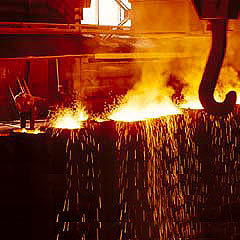Reichhold, Inc. Prevails In New Jersey CERCLA Case
By admin on June 26, 2009
 On June 22, 2009, after an six-week bench trial in the U.S. District Court for the District of New Jersey, we achieved a resounding victory for our client, Reichhold Inc., in an environmental cost recovery litigation. Reichhold v. USMRC et al, 2009 U.S. Dist. LEXIS 52471. The case addressed claims relating to the cleanup of a contaminated chemical plant site formerly owned by Reichhold in Carteret, New Jersey along the Arthur Kill. The case was brought pursuant to the federal CERCLA and New Jersey Spill Act statutes, as well as a 1994 settlement agreement between the parties.
On June 22, 2009, after an six-week bench trial in the U.S. District Court for the District of New Jersey, we achieved a resounding victory for our client, Reichhold Inc., in an environmental cost recovery litigation. Reichhold v. USMRC et al, 2009 U.S. Dist. LEXIS 52471. The case addressed claims relating to the cleanup of a contaminated chemical plant site formerly owned by Reichhold in Carteret, New Jersey along the Arthur Kill. The case was brought pursuant to the federal CERCLA and New Jersey Spill Act statutes, as well as a 1994 settlement agreement between the parties.
Defendant United States Metals Refining Co. ("USMRC"), which owned the site prior to Reichhold, had argued that the settlement agreement prohibited Reichhold from bringing the claims in the instant lawsuit. The Court rejected USMRC’s argument and held that, because virtually all of Reichhold’s claims constituted "New Environmental Obligations" under the settlement agreement, they were actionable. The Court also dismissed every defense to liability raised by the defendant, including the defense that Reichhold’s claims were time-barred.
In its Final Judgment, the Court awarded Reichhold $1,209,719 for investigation and cleanup costs that Reichhold had incurred while addressing metals contamination caused by USMRC’s industrial operations. The Court also entered a declaratory judgment requiring USMRC to pay certain of Reichhold’s future cleanup costs.
Our success at trial was attributable, in part, to our being able to discredit the expert testimony of USMRC’s experts. In conjunction with an aerial photogrammetrist, USMRC’s environmental engineering expert used historical aerial photographs of the site taken over a 60-year period to develop computer-generated surface contour maps that purported to depict Reichhold’s excavation and fill activities at the site over time. Because of these topographical maps, USMRC’s experts argued that Reichhold had caused extensive metals contamination at the site in the 1960’s and 1970’s by using contaminated fill in low lying areas of the property. On the basis of the cross-examination of defendants’ experts by me and my partner, Sheila A. Woolson, the Court rejected the experts’ testimony and held that the conclusions based on the photogrammetry performed were unconvincing. Consequently, the Court placed no reliance on the cut and fill evidence presented. In contrast, the Court accepted the testimony of Reichhold’s witnesses that Reichhold had not disposed of any metals containing contamination at the site.
Over the last several months, federal and state environmental regulatory agencies have devoted substantial regulatory attention to New Jersey waterways and rivers in the northwestern portion of the state that have been contaminated with metals, declaring some of them to be federal Superfund sites. In light of these events, the judicial determination that the metals contamination on the southern edge of the property was solely due to our adversaries’ prior disposal activity was timely. The Opinion is perhaps the first trial court decision to apply the apportionment principles articulated in the Supreme Court’s May 2009 decision in Burlington Northern.
